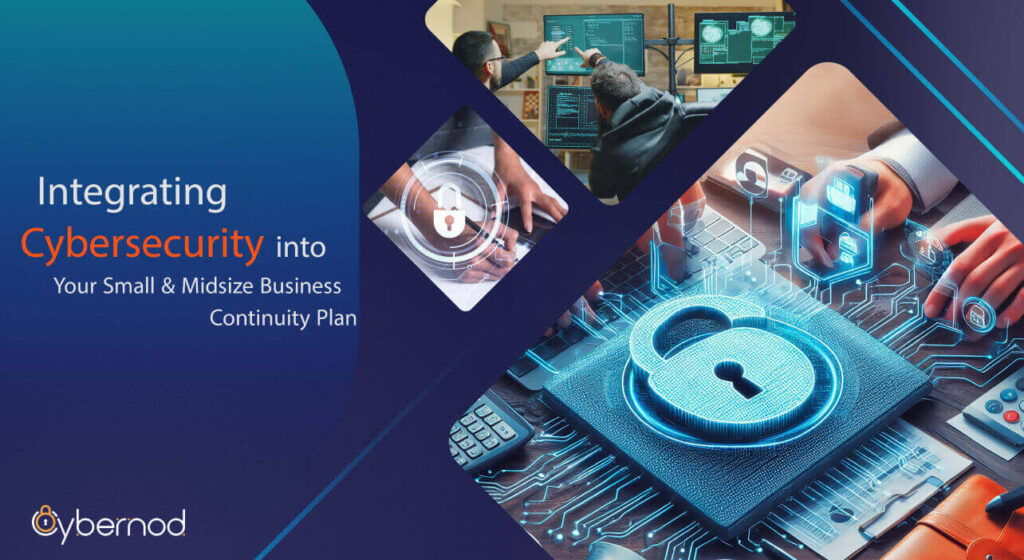
In the rapidly evolving digital landscape, small and medium-sized businesses (SMBs) face unique challenges in protecting their online assets. Cybersecurity has become an integral component of any robust business continuity plan. This article delves into the crucial steps and strategies for seamlessly integrating cybersecurity into your SMB’s business continuity plan, ensuring your business is well-equipped to handle any cyber threats.
Comprehensive Approach to Cybersecurity Integration
1. Crucial Role of Cybersecurity in Business Continuity
First and foremost, it’s essential to comprehend why cybersecurity is a critical facet of your business continuity plan. In an era where data breaches and cyber-attacks are increasingly common, protecting your digital infrastructure is not just about safeguarding data; it’s about ensuring the ongoing operation of your business. A cyber-attack can cripple your SMB, leading to significant financial losses, damage to your reputation, and operational disruptions.
2. Assessing Your Current Cybersecurity Posture
To begin with, conduct a thorough assessment of your current cybersecurity posture. This involves identifying potential vulnerabilities in your systems, understanding the types of cyber threats most relevant to your industry, and evaluating your existing cybersecurity measures. For instance, if your SMB handles sensitive customer data, ensuring that this data is securely protected should be a top priority.
3. Developing a Cybersecurity-Integrated Business Continuity Plan
Next, focus on developing a business continuity plan that fully integrates cybersecurity. This plan should outline the procedures to follow in the event of a cyber-attack, including data recovery processes, communication strategies with stakeholders, and steps to resume operations swiftly. Moreover, this plan must be regularly reviewed and updated to adapt to the changing cyber threat landscape.
4. Implementing Robust Cybersecurity Measures
Furthermore, implementing robust cybersecurity measures is a crucial step. This includes deploying firewalls, using secure passwords, regularly updating software, and conducting employee training on cyber hygiene practices. Additionally, consider investing in advanced cybersecurity solutions such as intrusion detection systems and encrypted data storage.
5. Consistent Testing and Revision of the Strategy
Similarly, regular testing and updating of your business continuity plan is vital. Conducting regular drills and simulations will help identify any gaps in your plan and ensure that your team is prepared to respond effectively in a real-world scenario. Moreover, staying updated with the latest cybersecurity trends and threats will enable you to refine your plan continuously.
6. Employee Training and Awareness
Employee training and awareness are also key components of integrating cybersecurity into your business continuity plan. Educating your staff about common cyber threats, such as phishing scams and malware, and training them on how to respond can significantly reduce the risk of a successful cyber attack. To illustrate, regular training sessions can help employees recognize suspicious emails, thereby preventing potential data breaches.
7. Collaborating with Cybersecurity Experts
In addition, collaborating with cybersecurity experts can provide valuable insights into strengthening your SMB’s cybersecurity measures. These experts can offer tailored advice and solutions based on your specific business needs and threat landscape. Specifically, they can assist in conducting risk assessments, developing cybersecurity policies, and implementing best practices.
Finally, integrating cybersecurity into your SMB’s business continuity plan is not a one-time task but an ongoing process. As cyber threats evolve, so must your strategies to combat them. By taking proactive steps, regularly reviewing and updating your plan, and fostering a culture of cybersecurity awareness, your SMB can navigate the digital realm with confidence and resilience. Remember, in today’s digital age, a strong cybersecurity posture is not just a technical necessity but a business imperative.
Categorized in:
Comments